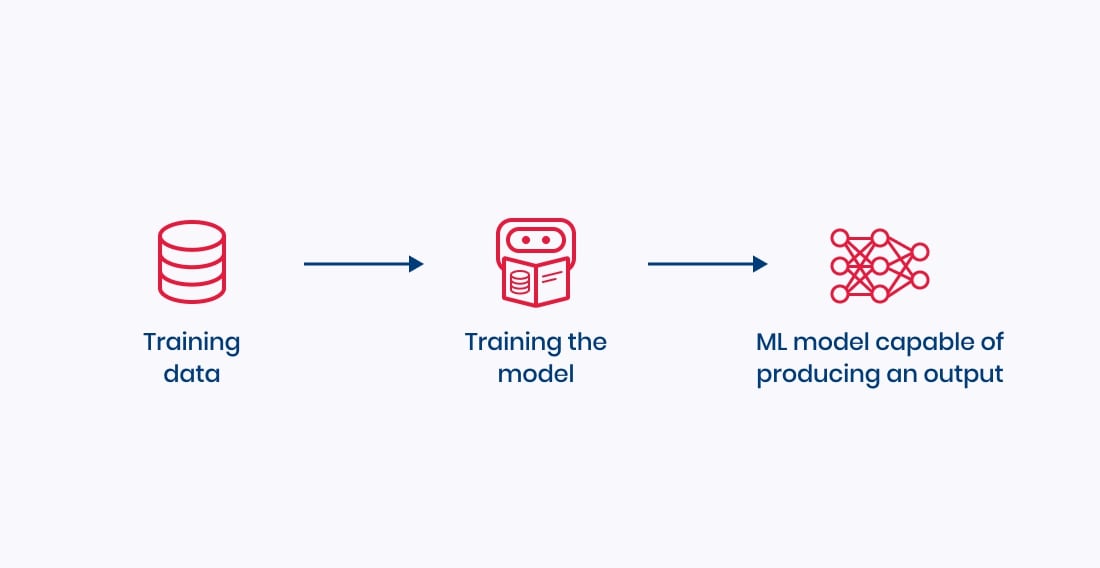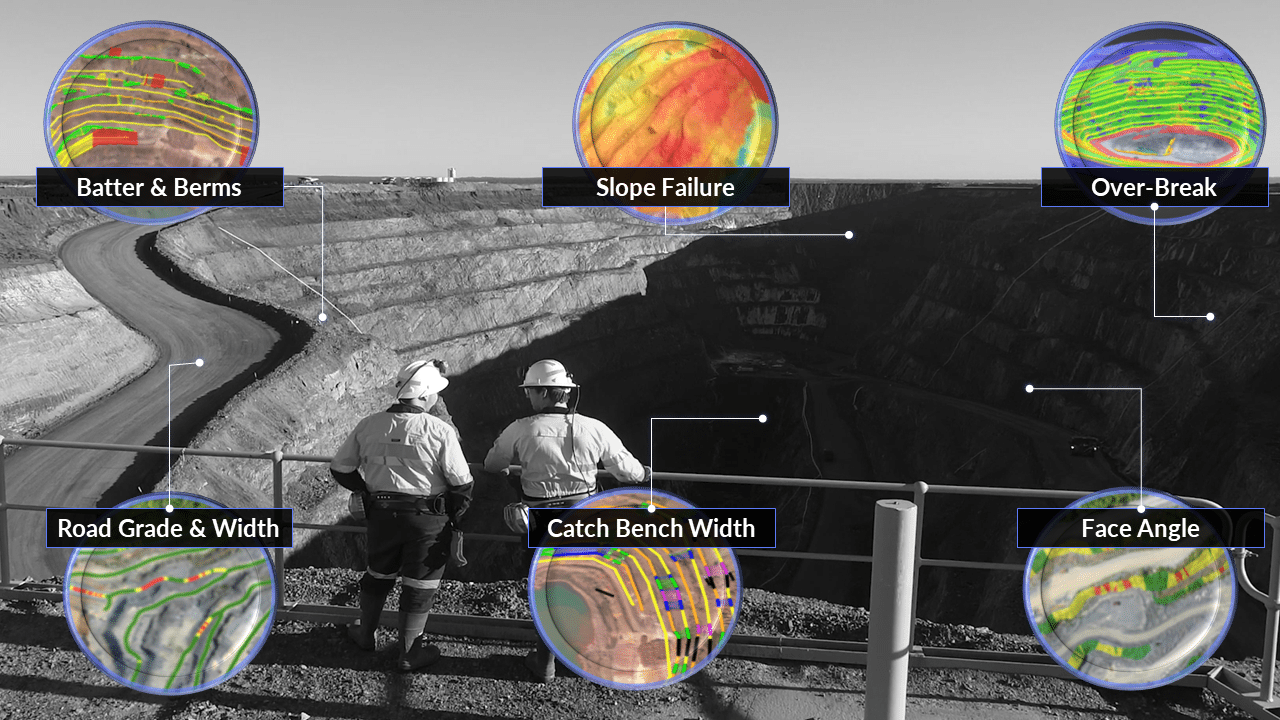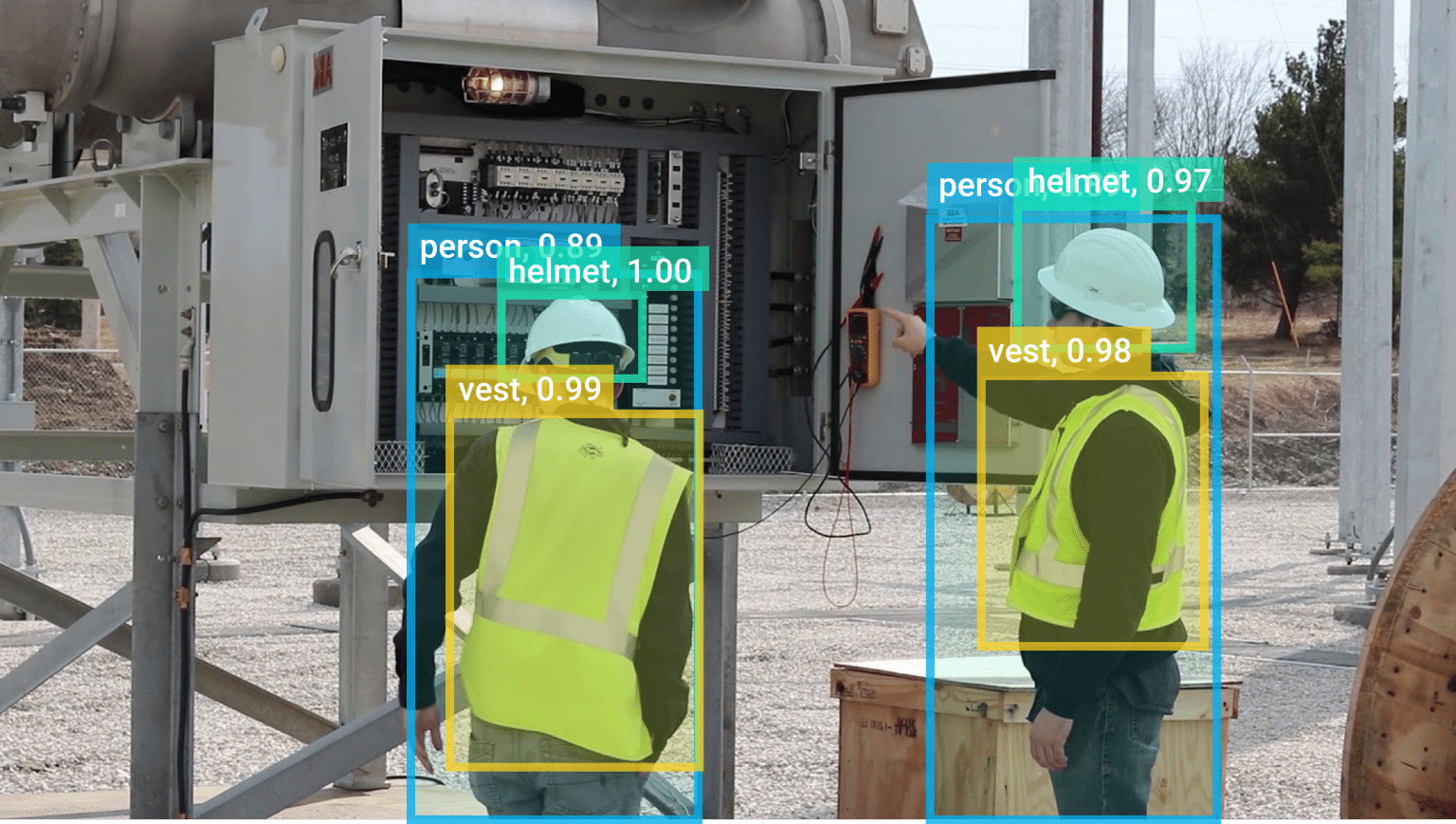Thirteen percent of the world’s GDP is channeled into one monumental sector: construction, an industry that saw over $12.74 trillion flow through its hands in 2022. And, as 2030 approaches, this behemoth is predicted to scale even greater heights, touching a staggering $14.4 trillion. Yet, construction remains one of the least digitized sectors globally. These aren’t just figures on a page; they signal the onset of an innovative era in construction, led not just by AI, but also by tailored custom AI solutions.
McKinsey’s ‘The Next Normal in Construction’ depicts an industry at an inflection point, with AI standing tall as its vanguard. Just as platforms like ChatGPT are revolutionizing human-machine interactions, and Siri and Alexa have become household staples, the construction world stands on the brink of harnessing the full might of AI’s capabilities. The potential windfall of comprehensive digitization? A jaw-dropping $1.6 trillion annually.
AI isn’t a mere tool—it’s a catalyst. It’s a force that promises to make efficiency the standard and to establish enhanced quality and safety as assurances, not aspirations.
Let’s focus on AI’s pivotal role in preconstruction, emphasizing its potential to reshape planning and decision-making. In construction, AI isn’t just knocking on the door of the future—it’s already inside, laying the foundation.
Defining Artificial Intelligence and Machine Learning in Construction
In the realm of modern construction industry, Artificial Intelligence (AI) and Machine Learning (ML) are more than just buzzwords—they’re transformative tools paving the way for a smarter, more efficient future. At its core, AI is a technology that simulates human cognitive functions, enabling machines to interpret data, recognize patterns, and make decisions, much like the human mind.
But how does Artificial Intelligence differ from Machine Learning?
While AI represents the broader goal of machines operating autonomously, ML is a subset that specifically focuses on the use of algorithms to learn from data. So, for the executive on the move: ML is your tailored suit in a world of off-the-rack solutions. Think of it as a production assembly, depicted in Figure 1, where data fuels insights, seamlessly turning inputs into valuable outputs.

Consider, for instance, a construction scenario where AI might oversee the optimal allocation of resources for a project. In the same vein, an ML model could analyze past construction mistakes to predict and prevent future errors.
Such integration extends from the drawing board to the final brick. AI and ML play pivotal roles in predictive maintenance, streamlining supply chains and upholding safety standards, as well as in the intricate designs drawn out by tools such as Building Information Modeling (BIM).
The essence? A construction paradigm that’s not merely efficient but also adaptive and visionary.
Overview of AI and Machine Learning technologies in construction stages
As construction stages progress, the integration of Artificial Intelligence and Machine Learning technologies ensures not just enhanced efficiency but also a paradigm shift in how we visualize, execute, and maintain our built environments. These tools, in tandem with human expertise, herald a new era for the construction industry, making it smarter, safer, and more sustainable.
1. Pre-construction Planning and Design
- Site Analysis: computer vision and artificial intelligence can analyze the topography, environmental factors, and potential risks of a site, providing invaluable insights even before breaking ground. This comprehensive evaluation of the construction site includes historical records, infrastructure insights, and precise climate data, all of which can be rapidly analyzed.

- Building Information Modeling (BIM): Machine Learning accelerates BIM by predicting outcomes based on various design iterations, optimizing both form and function. Building Information Modeling (BIM) offers a 3D view, streamlining planning and design for industry professionals. Incorporating every facet from architecture to plumbing, the key is harmonizing these elements without overlap. Enter AI powered generative design: a tool that sidesteps clashes and reworks. This software dives deep into design variations, refining as it learns. Set your criteria and watch as it tailors the ultimate 3D model to perfection.When UK-based Pure Gym aimed to break into U.S. markets, travel restrictions due to the global pandemic made visits challenging. However, using an AI-driven photo documentation tool, they were able to virtually tour sites in real time, saving both time and money. This technology enabled them to focus on key design elements of the gym, simulate member movement, and optimize the layout and amenities.
- Resource Allocation: AI systems can predict the optimal allocation of resources, including labor, machinery, and materials, ensuring cost-effectiveness.
- Design and inspiration: Leveraging AI in construction and architecture streamlines and augments parts of the design process. AI’s prowess in sifting through vast data sets allows software to evaluate countless materials rapidly. Such analyses aid designers in understanding material quality and appropriateness for specific areas. This automation in architectural design promotes a more data-driven and objective methodology. Innovative AI tools like computer-aided design (CAD), DALL-E-2, Midjourney, and Stable Diffusion further enhance the design realm. These tools not only refine existing designs but can also inspire architects with new shapes and patterns, broadening the horizons of architectural creativity.
2. Construction Execution:
- Safety Protocols: AI-driven surveillance systems monitor construction sites in real-time. With object detection, machines locate potential safety violations and hazards on job sites, thus ensuring worker safety.
- Automated Machinery: Autonomous or semi-autonomous machinery, guided by AI, performs specific repetitive tasks, such as bricklaying, concrete pouring, or even assembly, thereby improving precision and efficiency.
For example, the AI technology in the video below, an autonomous robot-printer, translates a digital building model for field use. Typically, this work was done by the expert foreman, who traditionally measured and marked layouts manually. A robot performs this task 100% accurately and 4-6x more quickly.
- Supply Chain Optimization: Machine Learning models predict supply needs, optimize orders, and manage inventory, reducing delays and waste. Construction companies are tapping into the Internet of Things (IoT) to optimize their equipment and vehicle fleets. AI allows real-time tracking, cars’ predictive maintenance, and monitoring of fuel and battery levels. This integration enables companies to foresee equipment failures and address them proactively, leading to substantial time and cost savings.
3. Post-construction and Maintenance:
- Predictive Maintenance: ML algorithms analyze data from sensors embedded within structures to predict when maintenance is needed, thus avoiding costly breakdowns.
- Energy Management: AI-driven asset management systems optimize building energy consumption based on usage patterns, external weather conditions, and other factors, promoting sustainability.
- Occupancy Analytics: Through sensors and ML models, buildings can monitor and adjust environmental conditions (like lighting or temperature) based on occupancy patterns, enhancing occupant comfort and energy efficiency.
4. Feedback Loop for Future Projects:
- Performance Analysis: Machine Learning evaluates the performance of completed projects, providing insights for future endeavors.
- Cost Overruns and Delays: AI systems analyze reasons for project overruns and delays, enabling companies to mitigate such issues in subsequent projects.
Top 10 Benefits of AI in Construction:
In construction industry, artificial intelligence and machine learning can provide the following benefits:
1. Cost Efficiency with AI
Despite having top project teams, many mega projects exceed their budgets. Artificial intelligence helps forecast these cost overruns by considering factors like project size, contract type, and the expertise of project managers. Predictive models utilize past data, including intended start and end dates, to craft feasible timelines for upcoming projects. AI in construction industry provides remote access to practical training content, enabling staff to swiftly enhance their skills. This streamlines the onboarding process for new project teams and their members, leading to faster project completion.
2. Enhancing Building Design Through Generative AI
Incorporating AI in Building Information Modeling (BIM) offers a paradigm shift in architectural vision. BIM, a sophisticated 3D model-based approach, facilitates a comprehensive project perspective. When blended with AI, it proactively detects potential design inconsistencies, ensuring seamless integration across architectural, engineering, and essential project elements. This fusion of AI and BIM streamlines design processes, minimizing chances of afterthought corrections and ensuring harmonized, clash-free designs.

3. Risk Management
Even more benefits of AI for construction companies come after improving traditional risk assessment by introducing dynamic ML mechanisms that identify, rank, and address vulnerabilities in expansive projects. Machine Learning (ML) continually scans and responds to site risks, facilitating an automatic hierarchy of issues. Thus, pre-emptive measures can be deployed more strategically, safeguarding both investments and timelines.
4. Revolutionizing Project Planning
With AI in the driver’s seat, project trajectories shift from being merely hopeful to precisely predictable. Advanced predictive analysis delves deep into myriad variables, ensuring that projects not only start on time but also culminate as scheduled, eliminating unforeseen delays.
5. Productivity Boost on Job Sites
Welcome to the age of self-directed machines and eagle-eyed productivity tracking. Autonomous machinery, unburdened by fatigue, paves the way for round-the-clock operations, while real-time monitoring ensures workers remain at their optimum efficiency, maximizing output.
6. Safety Prioritization in Construction
Safety isn’t just a checklist; it’s an AI-backed commitment. By leveraging AI in construction industry, potential safety hazards and pitfalls are not just identified with AI image recognition, but can be forecasted. This proactive approach helps in devising measures before hazards materialize, embedding safety in the very fabric of the construction process.

7. Addressing Labor Shortages
At the intersection of workforce and technology, AI stands tall. By providing insights into workforce distribution and performance monitoring, project managers can allocate resources more efficiently. And for those overnight tasks? Robots, such as “Spot the Dog,” keep the momentum going, ensuring sites are primed for action come sunrise.
8. The Advent of Off-site Construction
The future beckons with autonomous robots at the forefront of off-site component assembly. Beyond just precision, they bring scalability, repeatability, and efficiency, ensuring components are meticulously crafted and ready for seamless on-site integration.
9. Big Data and AI: A Powerful Combination in the Construction Industry
Harnessing the might of big data to AI’s analytical prowess, the construction sector now has a crystal ball for decision-making. Every byte of data, from robot maneuvers to equipment logs, is a piece of the puzzle. Delving deep, neural networks extract actionable insights, creating a blueprint for informed, strategic project management and execution.
10. Post-construction Management through AI
After the dust settles, AI’s role is far from over. Post-construction, AI-driven tools and analytics platforms step in, ensuring that buildings are not just constructed efficiently but also managed, maintained, and optimized for a sustainable, problem-free future.
Peeking into the Future: AI in Construction
Robotics, AI, and IoT promise up to 20% cost reductions in some construction projects. Imagine engineers deploying mini-robots through sites, their cameras vigilantly monitoring progress. Through artificial intelligence, sophisticated routing of electrical and plumbing systems is now a reality. AI powered safety systems track real-time interactions of workers, machinery, and objects on-site, providing supervisors with instant alerts on safety concerns, construction discrepancies, and productivity roadblocks.
While some fear massive job losses, AI is set to refine, not replace, the human touch. The construction landscape will see robots handling automatable tasks and cobots (i.e., collaborative robots) operating autonomously or under minimal supervision. This synergy speeds up construction work, trims costs, boosts efficiency, and fosters enhanced decision-making. The result? Fewer errors, diminished worksite injuries, and a surge in operational efficacy.
It’s crucial for both construction companies and industry leaders to pinpoint the investment areas where AI offers the most value. Those who embrace AI early will not only dictate the industry’s trajectory but also reap unparalleled benefits in both the short- and long-term horizons. By spearheading this digital revolution, these pioneers can secure unmatched growth and a significant competitive advantage.
The dawn of AI in construction industry is here, seamlessly integrating deep learning into contemporary workflows. As this tech evolution continues, anticipate AI to play an even more pivotal role, sharpening efficiency and refining construction outcomes. The future beckons – be prepared to harness the transformative power of AI in construction.
Empowering Construction with MindTitan’s AI Expertise
From initial planning to the finishing touches, artificial intelligence stands poised to revolutionize the very fabric of the construction landscape. As this wave of innovation beckons, MindTitan emerges at the forefront, armed with unmatched expertise and an unwavering commitment to client-centric solutions. Our approach goes beyond mere integration; it’s about AI technologies for unparalleled efficiency and excellence.
Don’t just adapt to the future; sculpt it.

Conclusion
In an ever-evolving world, the construction sector should hold the torch high, showcasing its resilience and adaptability. Stakeholders across the industry’s spectrum stand at a crossroads—where the dawn of AI doesn’t merely offer a competitive edge but rather carves out the trajectory for an efficient, safe, and innovative future. It’s a realm where AI is no longer a luxury but a necessity, a catalyst transforming construction firms and sites into hubs of precision, foresight, and optimal productivity.
Leaders within the construction industry must recognize this golden opportunity. By embracing AI-driven technologies, like those offered by MindTitan, they not only elevate their projects but also fortify their positions in the global arena. Such visionary adoption promises not just short-term gains but ensures long-standing growth and a decisive competitive advantage.
To recap, the transformative power of AI in construction industry is undeniable—from redefining preconstruction methodologies to enhancing post-construction management. It’s a future where AI’s role only amplifies, promising a smarter, safer, and more streamlined construction landscape. For stakeholders ready to propel their ventures into this brave new world, the message is clear: embrace AI technologies with zeal and vision. And in this endeavor, remember that partnering with pioneers like MindTitan can illuminate the path to a brighter construction future. The next chapter of construction industry is being written; make sure your legacy is etched within its pages.

